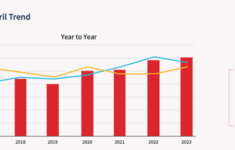Leaving digitization solely in the hands of the IT department is a recipe for failure, says a recent article from McKinsey & Co., noting that going agile requires business leaders and IT to take joint ownership of the software-development process.
Business units and IT need to collaborate on product development. When business units merely submit requirements and wait for IT to build and deliver finished products with only limited access to information, they lose the opportunity to steer technology development toward desired goals. Agile product development is less about taking orders and more about sharing information, the authors say.
Business-unit leaders need to put some skin in the game. They need to become product owners, setting the aspirations and vision for the product and determining which features have the most business value. They must be able to shift their schedules and commitments to make the development and success of the product their highest priority.
Product owners must be unwaveringly committed to the needs of the end users. The authors say senior executives can encourage this kind of outlook by asking targeted questions during product reviews: Who are the users? How are they using the product? Do they primarily work in an office or remotely? What are their biggest frustrations?
The authors note that in an agile environment, product managers must learn to live with “good enough,” releasing a minimally viable product that delivers value to end users in the short term but is expected to change on the fly. This test-and-learn approach means business executives must redefine their expectations and thresholds for risk. After the launch, the agile teams will collect feedback to determine what’s working, what’s not, and how to make incremental improvements that will enhance the product or the customer’s experiences with it.
See the full McKinsey & Co. article: “A business leader’s guide to agile.”





















 Job Search Strategy Varies by Generation: Survey
Job Search Strategy Varies by Generation: Survey  The Compliance Imperative: How Louisiana’s House Bill 672 Is Reshaping the MGA and TPA Landscape
The Compliance Imperative: How Louisiana’s House Bill 672 Is Reshaping the MGA and TPA Landscape  NYC Man Charged With Insurance Fraud in Staged Car Crash Captured by Dashcam
NYC Man Charged With Insurance Fraud in Staged Car Crash Captured by Dashcam  Allstate Insurers Sue Hyundai, Kia to Pay for Claims From Defective Cars
Allstate Insurers Sue Hyundai, Kia to Pay for Claims From Defective Cars 




